#Rancheria River
Text
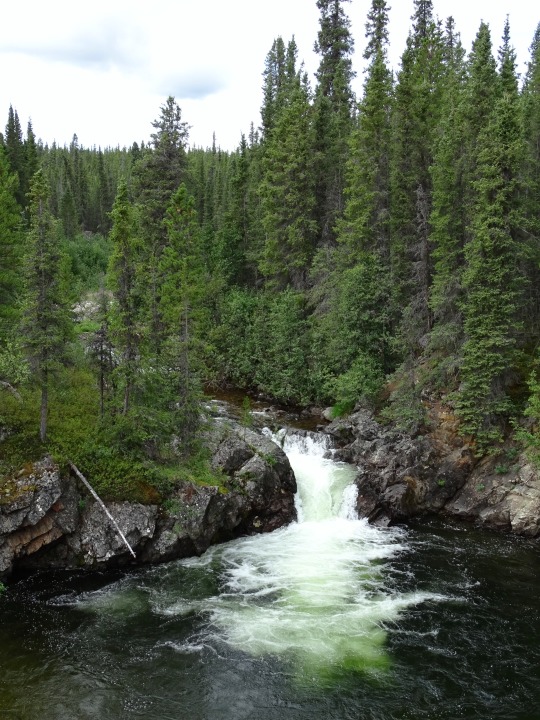
In the Woods
What do you think about my pic?
#Rancheria Falls Recreation Site#Rancheria Falls#Rancheria River#Yukon#Canada#forest#pine#rocks#waterfall#summer 2023#travel#original photography#vacation#tourist attraction#landmark#landscape#countryside#photo of the day#What do you think about my pic?#sub-alpine fir
9 notes
·
View notes
Text
The Tolowa Dee-ni’ Nation, Resighini Rancheria, and Cher-Ae Heights Indian Community designated the first ever Indigenous Marine Stewardship Area (IMSA) in the U.S. along the northern California coast.
The tribes plan to steward nearly 700 mi2 (1,800 km2) of their ancestral ocean and coastal territories from the California-Oregon border to Little River near the town of Trinidad, California.
As sovereign nations, the tribes say they’re not seeking state or federal agencies’ permission to assert tribally led stewardship rights and responsibilities; rather, they want to establish cooperative relationships recognizing their inherent Indigenous governance authority.
The tribes aim to restore traditional ecological knowledge and management practices that sustained the area’s natural abundance before colonial disruption.
#!!!!#good news#science#environmentalism#nature#environment#animals#conservation#indigenous people#california#stewardship#indigenous peoples#usa#climate change
2K notes
·
View notes
Text
ALL ABOUT MYSELF 🫶
what's up guy's! Welcome to my blog let me share to you a short description about myself. I am Gellian, 18 years old from Talisay 2 Dapdap Dolores Eastern Samar but you can call me gell for short. I'm a student here in Eastern Samar State University Borongan City (main campus) taking the course of Bachelor of Arts and Communication.

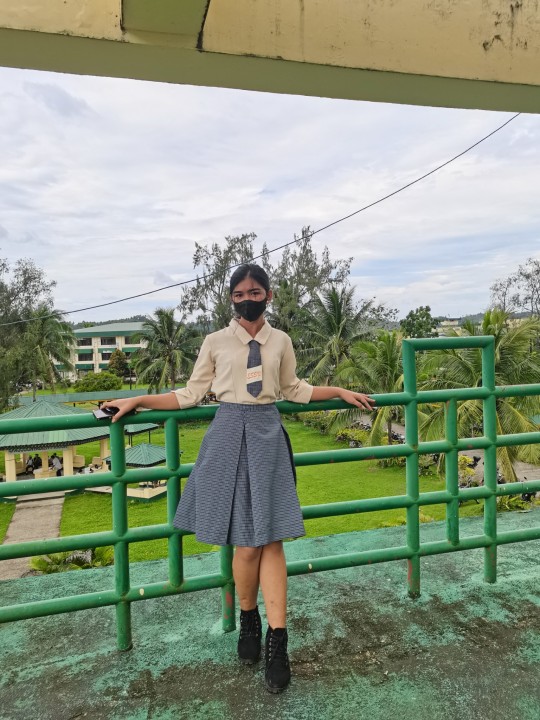
To tell you more about myself, I am the breadwinner of our family just to be honest with you being a breadwinner is not easy, and that is true!. Anyways so much for that, let's go on to the hobbies and interests that I have, so my passion revolves around singing, dancing, reading wattpad, travelling, and drunking of course HAHAHAH but even if I'm being like this I experience and enjoyed a lot of things in real life.

FRIENDS 🫶
Having a loving family and all is okay but sometimes it comes to our mind that we really need to have or to develop our communication through having a friend. When we say "best friend" that is someone who is there for you during good and bad times. A friend that will support your wants, a friend that understand your feelings, a friends that give you advice when you feel hurt by someone. All of us wanted to have a bestfriend and just like me, I'm so lucky to have a bestfriend like them. My cousin and sister is a very special person for me that I prefer over everyone else's. Because of our closeness I'm too comfortable and I can easily share my thoughts and feelings to them. Whenever I am in need of something or seek help, they're always there for me, so I admire them and we actually respect each other so that we can understand what we want. Our friendship called it "TRIO LOVERS" because even if sometimes we're fighting they aren't still bestfriend and nobody can ruin our friendship.


HOMETOWN 🫶
DOLORES (EASTERN SAMAR) was born in 1650, when some inhabitants of Bacod (or Bacor) established what eventually became a tiny village nestling about a kilometer from the mouth of Dolores (formerly known as Bacod) river. This village was named Dolores (in English, the Spanish word dolores means sorrows) to signify the sorrows and sufferings Bacodnons experienced on account of their armed participation in the Sumuroy Rebellion in 1649. To be sure, its beginnings is intertwined with the history of three villages: Bacod, Jubasan, and Paric. This calls for a concise explanation.
Bacod and the Origins of Dolores. Located about two kilometers from the mouth of Dolores river, Bacod was a bungto (large village) in existence before the Spaniards came to the area in 1565. The Jesuits stationed in Palapag evangelized it in 1602. In 1649, together with the bungto of Jubasan (see below), the village of Bacod was suppressed and consolidated with that of Tubig (now Taft) as a consequence of Agustin Sumuroy's rebellion that started in Palapag, in which Bacodnons were involved. On account of this suppression, some residents went near the mouth of the river to put up a cluster of houses that eventually became the small village (rancheria) of Dolores. That is how Dolores was born in 1650. Other Bacodnons transferred to the village of Carolina, about a kilometer west of Bacod. It may be noted that the bungto of Bacod was later eroded by floods. Which is why, it reverted to the status of a visita (see below). By 1895, its population was greatly reduced; it had only 20 villagers, 9 male and 11 female. The central part of the bungto of Bacod was completely submerged in Dolores river in the 1930s, though the remains of the stone church and the stone convento could be easily located. The abandoned portion of the bungto that remained was renamed Binungtoan by Doloresnons.


In my hometown has a lot of tourist's spot that you can also visit and enjoyed together with your love'ones, friends, and families. Just like the two pictures below that is called Linao Island one of the beautiful beach that you can see located at Tikling Island Dolores Eastern Samar.


0 notes
Text
ALL ABOUT ME
Ladies and gentlemen, Good day! I'm Jeraldine but you can call me jj your blogger for today, I'm an 18yrs old freshman at Eastern Samar State University's main campus an BA Communication Art student. I love playing futsal, eating, watching k-dramas, and singing. I'm from Dolores Samar but now residing at Borongan City Samar,
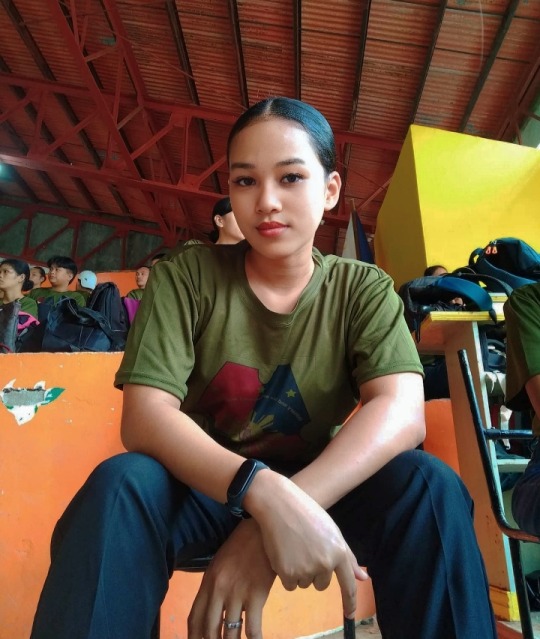
To tell you more about myself, I am a mother of an gorgeous cheerful angel named Briella I was 17 yrs old when I had her, she's 1 year old now. Me and my partner are still pursuing our studies to give our child a better life in the future.
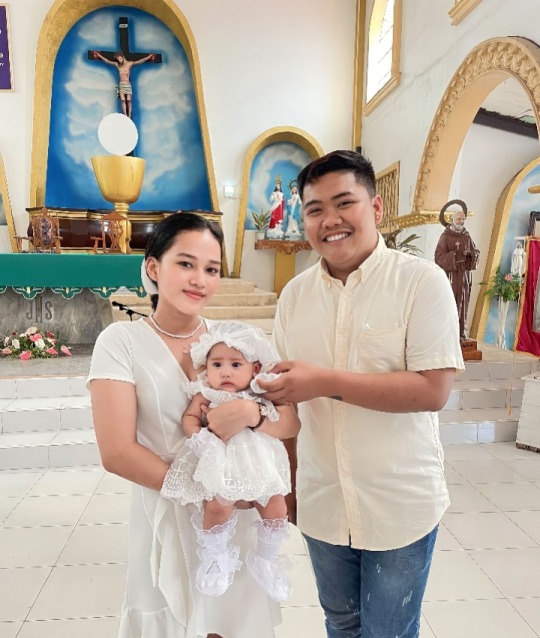
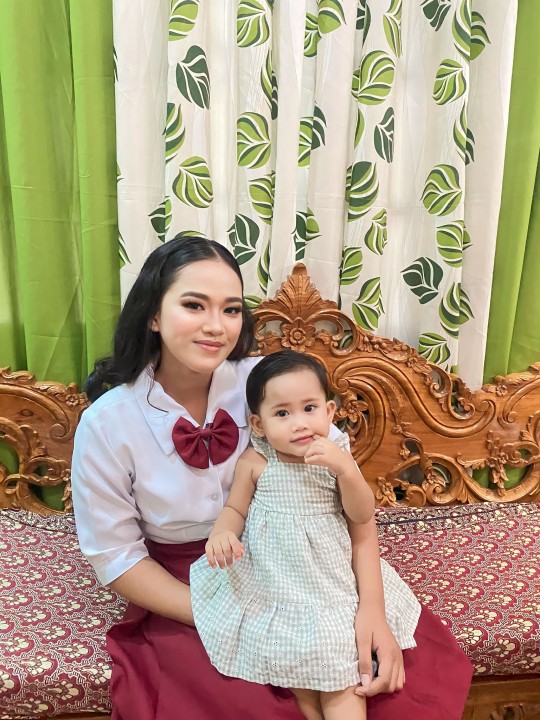
We're are looking forward to reach our dreams to give our daughter the best life that she deserves. Sometimes i find it hard for me to do my studies while taking care of my daughter but thanks to my supportive family and the family of my partner who's always ready to help us when we're struggling to keep up studies and being a parent.
#allaboutme #family
FRIENDS
It’s hard to meet people in life who are willing to give everything without the hope of any return. I consider myself lucky because I have someone like that in my life as i got them as my friends . Thanks for making life blissful. Thanks to them they're always there whenever i need them my one call away friends.


#trusted #onecallaway
HOME TOWN
DOLORES (EASTERN SAMAR) was born in 1650, when some inhabitants of Bacod (or Bacor) established what eventually became a tiny village nestling about a kilometer from the mouth of Dolores (formerly known as Bacod) river. This village was named Dolores (in English, the Spanish word dolores means sorrows) to signify the sorrows and sufferings Bacodnons experienced on account of their armed participation in the Sumuroy Rebellion in 1649. To be sure, its beginnings is intertwined with the history of three villages: Bacod, Jubasan, and Paric. This calls for a concise explanation.
Bacod and the Origins of Dolores. Located about two kilometers from the mouth of Dolores river, Bacod was a bungto (large village) in existence before the Spaniards came to the area in 1565. The Jesuits stationed in Palapag evangelized it in 1602. In 1649, together with the bungto of Jubasan (see below), the village of Bacod was suppressed and consolidated with that of Tubig (now Taft) as a consequence of Agustin Sumuroy's rebellion that started in Palapag, in which Bacodnons were involved. On account of this suppression, some residents went near the mouth of the river to put up a cluster of houses that eventually became the small village (rancheria) of Dolores. That is how Dolores was born in 1650. Other Bacodnons transferred to the village of Carolina, about a kilometer west of Bacod.
In the Philippine province of Eastern Samar, Dolores officially known as the Municipality of Dolores is a third-class municipality. It has a 44,626 person population as of the 2020 census. In the Philippines' Eastern Visayas area, the Pacific Ocean borders the seaside town of Dolores to the east. (https://easternsamar.gov.ph)
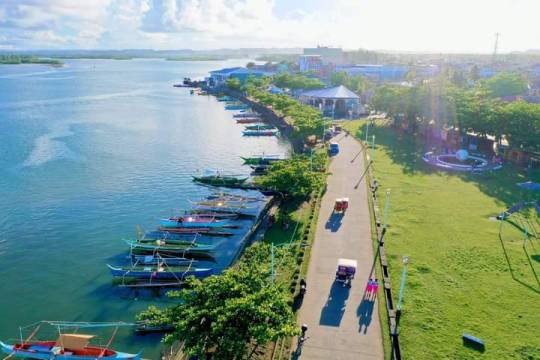
Dolores is also know for it's beautiful and adventurous natural islands, such as Hilabaan island and Tikling island. My home town of Dolores Samar is a tranquil area in the area of the Philippines that has a particular place in my heart. The beaches thier are clean as well as the islands and have lush forests. Our hometown is well renowned for its natural beauty, The people thier are friendly and nice and of course kind.
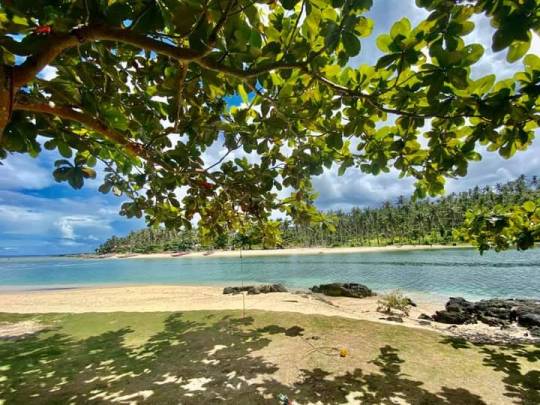


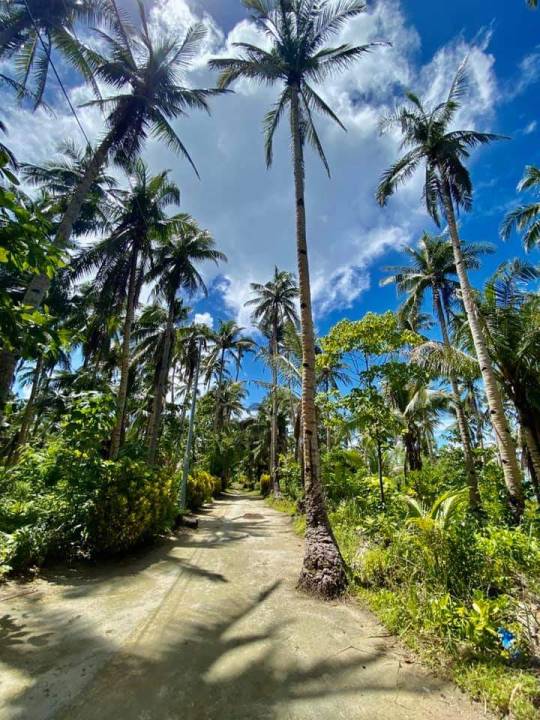
#uswagdolores
1 note
·
View note
Text


I am from Dolores Eastern samar. DOLORES (EASTERN SAMAR) was born in 1650, when some inhabitants of Bacod (or Bacor) established what eventually became a tiny village nestling about a kilometer from the mouth of Dolores (formerly known as Bacod) river. This village was named Dolores (in English, the Spanish word dolores means sorrows) to signify the sorrows and sufferings Bacodnons experienced on account of their armed participation in the Sumuroy Rebellion in 1649. To be sure, its beginnings is intertwined with the history of three villages: Bacod, Jubasan, and Paric. This calls for a concise explanation.
Bacod and the Origins of Dolores. Located about two kilometers from the mouth of Dolores river, Bacod was a bungto (large village) in existence before the Spaniards came to the area in 1565. The Jesuits stationed in Palapag evangelized it in 1602. In 1649, together with the bungto of Jubasan (see below), the village of Bacod was suppressed and consolidated with that of Tubig (now Taft) as a consequence of Agustin Sumuroy's rebellion that started in Palapag, in which Bacodnons were involved. On account of this suppression, some residents went near the mouth of the river to put up a cluster of houses that eventually became the small village (rancheria) of Dolores. That is how Dolores was born in 1650.
https://msgrlope.blogspot.com/2012/11/a-brief-history-on-origins-of-dolores.html?m=1
Sept. 17, 2023 Sunday
1 note
·
View note
Text
CANADA - YUKON
2023 July 1 (Sat) – We gave everyone a totally free day to do what they wanted. We ran some errands – got fuel and did some shopping. We drove to the Yukon Wildlife Preserve. The tour bus was getting ready to leave when we arrived so we quickly paid and joined the group for a tour of the preserve. They had 4 moose (we saw one), elk, thin horn sheep, mountain goats, 2 lynx, and wood bison.
2023 June 30 (Fri) – We took a bus tour of Whitehorse this morning. I expected one 56-passenger bus but 3 12-passenger vans arrived instead. We split into groups and rode around the area for 2-1/2 hour. Whitehorse is not very spread out and we hit all the high spots.
After we got back to the campground, Paul and I hopped in the truck and went into town to do some grocery shopping. The Canadian Store wanted a dollar to take a shopping cart. We had none so we moved on to Walmart. It was a very small store with a poor selection of items. We couldn’t find several items. So, we went to the Save-on-Foods. There we picked up the rest of what we needed. We will be having a potluck barbecue tomorrow after the Canada Day festivities in town, and on July 4th in Skagway after the Independence Day festivities. In both instances, the caravan is providing the meat and the group is providing the sides.
At 6 p.m. we climbed into Johnny & Linda’s truck and rode with them to downtown Whitehorse. First stop was at the Visitor Center where they got their 3-day parking pass. Then we walked 3 blocks to the Dirty Northern Bastard, a pub. Paul and Johnny had truffle burgers, Linda had a salmon burger, and I tried an Atlantic Char. It turned out to be a meaty white fish. Very tasty. It came with fried capers. Unusual but good.
2023 June 29 (Thu) – We packed up and left Swift River at 8:00 a.m. It was 185 miles and 3 of the 5 groups wanted to stop off to see the George Johnston Museum. We saw it last time we were here so we were in the “bah, humbug” group. We pulled into the Pioneer RV Park in Whitehorse around noon. The owner was not in and had not left a voucher for how much our bill was so the clerk told me to come back tomorrow. Everybody up here is so laid back about money. Don’t worry. Pay me later when it is convenient for you. What a difference from the states where everyone wants to be paid upfront before anything.
We got the campground map, determined where to put everyone, and then parked each group as they came in. It was a little tricky because we had to determine whether they came in on the left or right side. The sides are Jack and Jill so one rig faces one direction and the one next to it faces another direction. They share the same stanchion.
We grilled some chicken-on-a-stick, made boiled potatoes, Linda provided carrots, and we enjoyed a meal with Johnny and Linda. Before dinner, a few of us gathered around the Padberg/Pepperell RV for social hour. I was pooped and went to bed at 9.
2023 June 28 (Wed) – We packed up and left Watson Lake at 9 a.m. It was only 85 miles to Swift River. It was a boring drive for half the way – mostly long, lonely roadway through forest. Then we spotted a porcupine, then a rabbit, a ptarmigan, and a chipmunk. There wasn’t the array of wildlife as there has been up to now.
Continental Divide Alpine Resort & RV Park (cough, cough) is a spot along the highway. They have about 25 sites – 15 pull thru and the rest back in. There is only 30 amp and water service. The area is dirt and gravel with a good smattering of trees. The owner, Rick Aley, couldn’t have been nicer and as helpful as could be. He kept riding by on his ATV with his dog to check on us. We got everyone in OK. We were warned to watch for a grizzly bear in the area. Many went for a hike to Rancheria Falls.
At 5 p.m., 22 folks went in to the café to eat. At 6 p.m. the second seating took place (it was a small café). After dinner, we held a travel meeting in the café.
2023 June 27 (Tue) – We went to the Northern Lights Centre for a show about the northern lights. It was kind of dry and I kept nodding off. After the show, we all went exploring around the area. We held a travel meeting next to the office on picnic tables they had there. The sun was blazing down so we made the meeting quick then gathered around our RV for happy hour.
2023 Jun 26 (Mon) – We drove 200 miles from Toad River, BC to Watson Lake in the Yukon. It was exciting with view of wood bison, caribou, and bears. Downtown RV Park was essentially a big open dirt lot with 3 rows of campsites – one on either fence and a pull thru section down the middle of the lot. The owner, Archie Tannock, had a Scottish burr and something of an attitude. We worked well together, though, and things went off with few problems. When we first pulled into the campground, Fantasy RV was also arriving with their caravan and there were motorhomes everywhere. We managed to get everything straightened out and everyone got parked fine.
Once everyone was in, we all went to the Signpost Forest. In 1942, a soldier was given the responsibility to put up a directional sign indicating how far Washington DC and other towns were from Watson Lake. Being homesick, he also stuck up a sign for his hometown. From there on, people have come from all over the world and added signs to the area. There are over 85,000 signs in the place. We put our sign up and hunted for signs from other caravans. It is a dizzying collection of signage.
0 notes
Text
Sky River Casino launches ‘Wreaths of Hope’ benefit | Lifestyle
Sky River Casino launches ‘Wreaths of Hope’ benefit | Lifestyle
Ten large wreaths adorn a wall near the entrance to the valet parking at Sky River Casino. Each 48-inch wreath was decorated by a local, charitable nonprofit as part of the “Wreath of Hope,” a friendly competition that awards $500 to each organization and $2,500 to the first place winner.
Participants include the Elk Grove Food Bank Service, the Wilton Rancheria Boys and Girls Club and the Elk…

View On WordPress
0 notes
Link
The Tolowa people have survived a history of continued removal, genocide and discrimination within their homelands by the explorers, settlers, miners and ranchers who "colonized" the area. Our Government, Culture and Traditions survived colonialism and termination because we persisted and never gave up our identities. As the original inhabitants and stewards of the Smith River Plain and Estuary the Tolowa Dee-ni’ Nation has been presented with a quintessential opportunity to return a critical portion of our unceded ancestral territory back under the rightful ownership and management of the Tolowa Dee-ni’ Nation.

A summary of the settler-owners’ many environmental and coastal lands violations that prompted the sale. The Tolowa Dee-ni’ have shown their commitment to restoring damaged lands to health.
Learn some of the history of the Tolowa Dee ni’ people and more information about the Land in this StoryMap created by the Nation
Sign the Tolowa Dee-ni’ Nation’s petition
#tolowa#northern california#stolen land#tolawa dee ni'#petition#southern oregon#unceded territories#settler colonialism#smith river rancheria#native california#indigenous americans
0 notes
Text
All The Indigenous and Endangered Language Learning Apps You Need
2019 is the International Year of Indigenous Languages as designated by UNESCO. If you’ve not yet had a chance to learn a little of an indigenous language this year, I’m making it as easy as possible and bringing you a long list of minority, indigenous and endangered language learning apps.
Before we get to the list of apps, I’ve made you a video to explain the differences between minority/minoritised, indigenous, and endangered languages.
youtube
Free Ultimate List of Language Learning Resources
I’ve added a tab with the links to these apps to my huge and ever-growing free Google Sheets file the Ultimate List of Language Learning Resources. Woohoo!
Click the image below to get free access now.
Heads up: apps and tech is ever-changing. So if there’s something that no longer works on this list or you’ve got a suggestion for a new one that does, let me know!
Ok, ready? Let’s get into this. I’m going to order things by regions as best as possible. For each region, I’ll also be starting by listing some “bigger” apps you may already know that have courses/support for indigenous or endangered languages.
North America
Below you’ve got a list of apps and developers that are designed to help people learn indigenous languages from North America. I’m including Canada, USA, and Greenland in that, but not Mexico, the Caribbean and Central America. Languages from these places are included in the section below – Latin America.
Related: Language Stories – Episode 1: New York + The 7 Line
Memrise
Memrise has a selection of courses for indigenous Native North American languages, including…
Cherokee
Algonquian
Alutiiq
Choctaw
Citizen Potawatomi
Greenlandic
Inuktitut
Lakota
Other Native American Languages
Drops
Drops has a growing range of languages, including…
Hawaiian
Duolingo
Duolingo has you covered for two North American languages:
Navajo
Hawaiian
Master Any Language
Master Any Language is a website and app (Apple and Android) I discovered during my research for this article. And, wow, there’s a huge range of languages on it! Expect to see it listed under more regions below too.
Cree
Greenlandic
Inuktitut
Inupiaq
Navajo
Ojibwe
(and more I may have missed!)
File Hills Qu’Appelle Tribal Council Education Department
This developer has apps for a number of languages: Cree, Dakota, Lakota, Nakota, Saulteaux.
Prince Albert Grand Council
Prince Albert Grand Council has a couple of apps available for Swampy Cree and Dakota.
Binasii Inc
There’s a good number of apps from this developer for a range of languages: Dakota, Opaskwayak Cree, Saysi Dene, Long Plain Ojibway and more.
The Language Conservancy
The Language Conservancy has a large selection of apps for indigenous North American languages: Mandan, Hidatsa, Arikara, Cheyenne, Yanktonai, Keres, Nakoda, Crow, Omaha, Maskoke.
Miromaa Aboriginal Language and Technology Centre
There’s a small selection of apps from this developer for Pomoan languages, a language family from northern California: Northern Pomo, Central Pomo, Southern Pomo, bahtssal.
Ogoki Learning Systems Inc
Quite a few apps and languages here: Ojibway, Saulteaux, Blackfeet, Cree, Meskwaki, Northern Tutchone and more.
Thornton Media Inc
There’s Apple and Android apps for these languages from this developer: Cree, Mohawk, Tsuut’ina, Chickasaw, Yugtun, Omaha and more.
First Peoples’ Heritage Language and Culture Council
I love how much I’ve learnt from writing this post. Before, I had no idea about any of the languages that this developer has apps for: Xeni Gwet’in, Secwépemc, Hlgaagilda Xaayda Kil, and more.
Yamózha Kúé Society
Still in awe at how many apps there are out there for indigenous and endangered languages? There’s still more to come!
Yamózha Kúé Society has apps for these languages: Inuinnaqtun, Gwich’in, Shutaot’ine, South Slavey, Tlicho, NWT Cree, Denededline.
Christopher Horsethief
Christopher Horsethief has various apps out there for the following languages: Cree, Navajo, Muckleshoot, Osage, Ktunaxa, Salish.
Aidan Pine
Aidan Pine is the developer behind Mother Tongues, a company that’s (in their own words) “Committed to creating thoughtful language revitalization tools for people”, which is pretty exciting.
So far, there’s three apps available for Apple and Android: Inuttitut, Ayajuthem, Gitksan.
Gabriel Dumont Institute
Now we’re reaching the developers specialising with one language. The first is the Gabriel Dumont Institute with an app for Michif.
Pinnguaq
Pinnguaq have an app just for Inuktitut.
Smith River Rancheria Waa-tr’vslh-‘a~ Department
One app here for Tolowa Dee-ni’.
Samson Cree Nation
An app from this developer for Maskwacis Cree.
Dakota Iapi
There’s an Apple and Android version of this app for Dakota Iapi.
Lakota Language Consortium for Lakota
There’s a really helpful selection of apps for Lakota (media player, vocab, dictionary, and keyboard) from the Lakota Language Consortium.
Old Sun Community College for Blackfoot
There’s an app for Blackfoot from Old Sun Community College.
Neechee for Ojibwe
This app is a great verb help if you’re learning Ojibwe.
Wikwemikong Heritage Organization for Anishinaabemowin
There’s an Apple and Android version of this app to help you learn Anishinaabemowin.
Latin America
There’s some support here from bigger apps but also some great options you may not have heard of too!
Related: Language Stories: Guaraní in the Heart of South America – Episode 12
Memrise
Memrise has courses for Yucatec Maya, Guarani, Nahuatl, Quechua, and Ayamara (in Spanish).
Nahuatl (some more options designed for Spanish (Mexico) and Spanish (Spain) speakers.)
Yucatec Maya (plus a couple for Spanish (Spain) and Spanish (Mexico) speakers.)
K’iche’
Quechua (more listed under Spanish (Mexico) Spanish (Spain) speakers.)
Aymara: there’s a small number of courses listed under Spanish (Spain) and Spanish (Mexico) but none in English.
Guarani (and some more courses for Spanish (Spain) and Spanish (Mexico) speakers.)
Duolingo
If you switch your language on Duolingo to Spanish, you’ll be able to access the Guarani course. Note however, that this course is actually Jopara, the mix of Guarani and Spanish spoken by many people in Paraguay.
Master Any Language
Master Any Language has simple courses for Guarani, Quechua, and Aymara on Apple and Android on their main app.
Centro Cultural de España en México
There’s Apple and Android versions for these apps from the Centro Cultural de España en México for Náhuatl, Mixteco, and Purépecha.
John Garcia
John Garcia has created two apps for Mexican languages Mixteco and Nahuatl.
IIAP
There’s a couple now that are only on the Google Play Store (as far as I could find). This huge selection of apps from IIAP includes apps for Ashaninka, Taushiro, Bora, Quechua and more.
SimiDic
Another one that’s only on the Google Play Store. This is a dictionary app that translates between three South American languages: Aymara, Guarani, Quechua.
Runashimi
This app available for both Apple and Android is to help you with Quechua.
Guaranglish
I have to include this one! We actually spoke with the developers of the app Guaranglish for our podcast and video series Language Stories.
Niuki for Wixárika
Wixárika is a language spoken in parts of Mexico by nearly 45,000 people. This app focuses on that one language.
Australasia
In this section, we’ll cover apps for indigenous and endangered languages from Australia, New Zealand, and the South Pacific Islands.
uTalk
Maori is available on uTalk, as well as Samoan and Fijian.
Drops
Maori and Samoan are also both available on Drops.
Master Any Language
Maori, Samoan, Fijian, Tongan, Tahitian, Nauruan, Marshallese, and possibly more I’ve missed are all included on Master Any Language, which has apps for both Apple and Android. (Some languages don’t have their own app, and are available on the main ‘Master Any Language’ app.)
Victorian Aboriginal Corporation for Languages
The Victorian Aboriginal Corporation for Languages has developed a great range of apps for a selection of indigenous Australian languages including Tyalingi, Wadawurrung, Wemba Wemba, Taungurung and more.
Wiradjuri Condobolin Corporation Limited
Again, another chance to keep learning about languages I knew nothing about whilst I was wriitng this article!
Wiradjuri Condobolin Corporation Limited has both Apple and Android apps for Wonnarua, Yitha Yitha, Yorta Yorta, Mutti Mutti, Wiradjuri, Barngarla, and Nari Nari.
Benedict Foley
There’s a good selection of apps here for a variety of indigenous Australian languages including Pertame, Kune, Kayardilt, Gamilaraay, Yuwaalaraay, and many more. There’s even an app to help identify birds using a range of languages that are no longer spoken but have aboriginal bird names and knowledge to be shared.
NTLanguages
There’s Apple and Android versions of this collection of apps from NTLanguages for Anindilyakwa, Eastside Kriol, Ritharrngu, Tiwi, Wubuy
Pollen
Pollen have developed a few apps for the Yorta Yorta, Gamilaraay, and Yuwaalaraay languages.
Mawng
Available on both Apple and Android, this app is the work of linguists and community members on South Goulburn Island around 300km east of Darwin.
Yawuru Ngan-ga
This app has a dictionary and vocab lists for Yawuru Ngan-ga, a language spoken in Broome, Western Australia.
Tipu Te Reo Māori
Available on both Apple and Android, Tipu Te Reo Māori is an app to help you learn Maori.
Peter Akuhata
Another one for Māori!
Te Pūmanawa
More for Maori, this time available on Apple and Android.
AUT University
One more option here for Maori learners available on both Apple and Android.
TATAU
The final one of this little run of Maori options! TATAU is a little different though as it’s focused solely on counting.
SPIKIT
Designed to teach a selection of African languages, there’s also an option here for the Australian language of Yolunu. It’s available on Apple and Android.
Charles Darwin University
The LAAL Reader from Charles Darwin University is a really cool one. With stories in over 25 languages from the Northern Territories in Australia, it’s a good way to begin to learn more about aboriginal cultures and languages.
It’s available on both Apple and Android.
Government of Western Australia
Sharing the Dreaming is an app developed by the Government of Western Australia that shares Dreamtime stories, and words and translations in the Nyoongar language.
Indigenous Remote Communications Association
The Indigenous Remote Communications Associations have developed a few apps, mainly radio stations for indigenous languages in Australia. However, there’s also indigiTUBE, which, in their own words, is “the national online media platform by and for First Nations people, preserving language and culture for our future generations.”
Asia
According to Ethnologue, Asia actually has the most indigenous languages spoken and used there, closely followed by Africa.
In this section, I’m including the Middle East here as it’s not a region I know as much about. (If you do and can help me expand it into its own section, please do let me know!)
Also, seeing as it would be a whole host of other blog articles in itself to list all the apps out there for Chinese, Japanese, Hindi, Korean…etc, I’m focusing here on endangered languages in Asia. Even then, I’m having to be a little more specific and focus on endangered languages I already know of.
You know, to try and actually be able to publish this article at some point in my lifetime!
Related: Language Stories: Kristang – A Tale of Two Cities
Memrise
Memrise has a great range of courses listed for us here. These include…
Kristang (a creole language so not really classed as indigenous, but endangered, which is what we’re focused on for this section)
Ainu
Jeju
Western Armenian
uTalk
uTalk has a great number of indigenous Asian languages available, many are spoken by big numbers of people so not endangered, but I do want to give a mention here to uTalk for the sheer number of languages they’ve covered.
Master Any Language
Komi, a language spoken in Russia is available on Master Any Language. It’s on the main app on Apple or Android.
Africa
Again, so many indigenous languages in Africa that it’s tricky to know where to begin! And seeing as many people have never learnt an African language (myself included), I’m doing things a little differently here.
So instead, I’m focusing mainly on the key apps I’ve found that have courses in a wide range of indigenous African languages. Many have millions of speakers and yet you may never have heard of some of them! (I definitely learnt something new from putting this section together too!)
uTalk
Just like in regards to Asia, uTalk has a really exciting number of indigenous African languages available. Not all are endangered, but many are of course indigenous.
Memrise
Just from the Memrise groupings on the sidebar, there’s a lot to learn here…
Akan-Twi, Amharic, Hausa, Kaonde, Kinyarwanda, Luganda, Malagasy, Mandinka, Nyanja/Chichewa, Somali, Soninke, Swahili, Wolof, Zulu, and more.
SPIKIT
I mentioned SPIKIT above in the Australasia section because they have a simple course for a language spoken in Australia.
However, the moin focus of this app is Shona, Xhosa, Zulu, and Ndebele. And the good news is it’s on Apple and Android.
Master Any Language
So. many. options.
Master Any Language has really been one of the gems I’ve discovered writing this article. The interface is retro but that doesn’t matter when you’re short on resources. Their app is on both Apple and Android.
Europe
Again, obviously there’s English, French, Spanish, and many other widely spoken and studied languages spoken technically indigenously in Europe. However, to keep things simple, we’re going to focus on smaller indigenous European languages that may or may not be endangered.
uTalk
uTalk has a huge range of European languages including Welsh, Sicilian, Scottish Gaelic, Scots, Sardinian, Southern Saami, Neopolitan, Manx, Irish, Galician, Catalan, and Basque.
Memrise
Similarly to uTalk, Memrise has a large range of options here, including…
Basque
Breton
Catalan
Cornish
Corsican
Faroese
Galician
Ladino
Manx
Neapolitan
Occitan
Romani
Sami languages
Scots
Scottish Gaelic
Sicilian
Yiddish
Duolingo
Duolingo exists for Welsh and Catalan. Yay!
Master Any Language
There’s a whole range of European languages on Master Any Language including Cornish, Breton, Corsican, and more.
Remember that you can get this app on both Apple and Android.
SaySomethingIn…
A great series available in a range of indigenous British languages as well as a few others: Welsh and Manx available on apps, and more on their website.
Free Ultimate List of Language Learning Resources
And that’s the list! Yay!
Missed it at the start of the post? I’ve added a tab with the links to these apps to my huge and ever-growing free Google Sheets file the Ultimate List of Language Learning Resources. Woohoo!
Click the image below to get free access now.
Have you got an app that needs adding to this list? Let me know by sharing it in the comments below!
The post All The Indigenous and Endangered Language Learning Apps You Need appeared first on Lindsay Does Languages.
from WordPress https://ift.tt/2VJojVx
via IFTTT
90 notes
·
View notes
Text

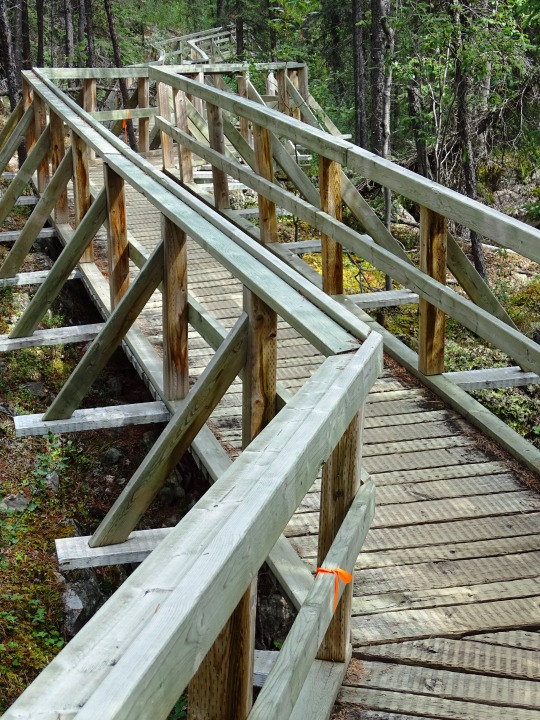
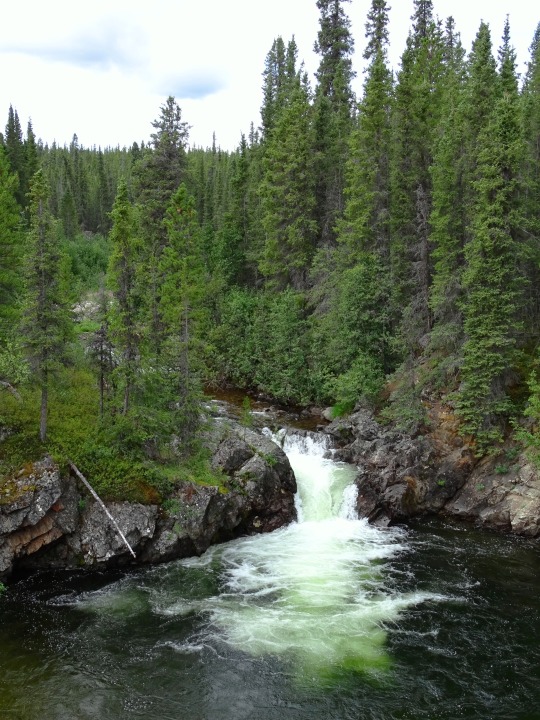
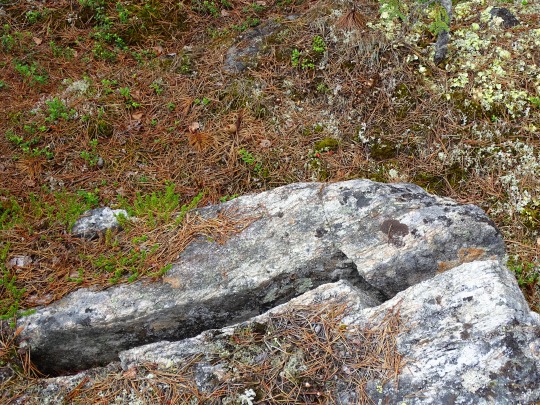
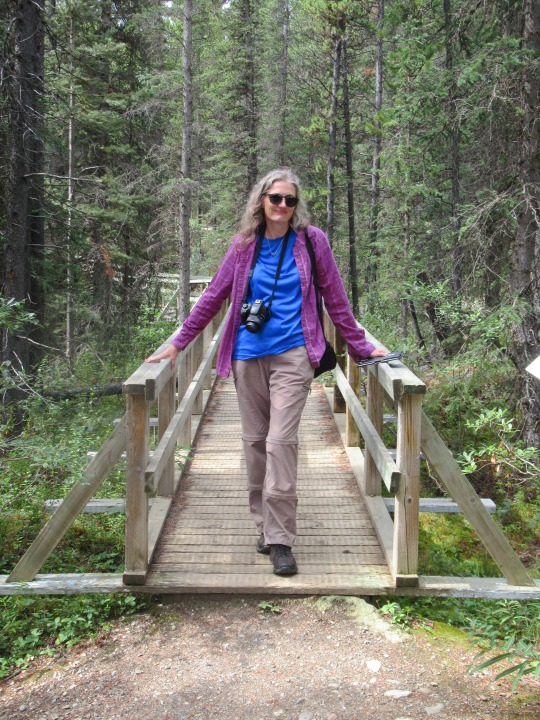
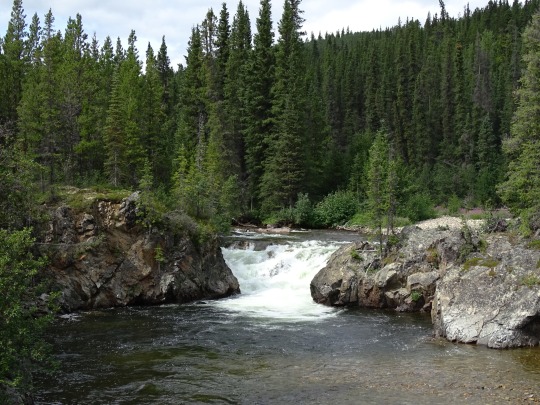




Rancheria Falls Recreation Site, YT (No. 6)
Empetrum nigrum, crowberry, black crowberry, or, in western Alaska, blackberry, is a flowering plant species in the heather family Ericaceae with a near circumboreal distribution in the Northern Hemisphere. It is usually dioecious, but there is a bisexual tetraploid subspecies, Empetrum nigrum subsp. hermaphroditum, which occurs in more northerly locations and at higher altitude.
The species has a near circumboreal distribution in the Northern Hemisphere. It is also native in the Falkland Islands.
Evolutionary biologists have explained the striking geographic distribution of crowberries as a result of long-distance migratory birds dispersing seeds from one pole to the other.
Empetrum nigrum grows in acidic soils in shady, moist areas.
The fruit is edible and can be dried. However, it has an acidic taste and can cause headaches. It is abundant in Scandinavia and treasured for its ability to make liqueur, wine, juice, or jelly. In subarctic areas, the plant has been a vital addition to the diet of the Inuit and the Sami. The Dena'ina (Tanaina) harvest it for food, sometimes storing in quantity for winter, sometimes mixed with lard or oil.
The species can also be grown as a ground cover, or as an ornamental plant in rock gardens, notably the yellow-foliaged cultivar 'Lucia'. The fruit is high in anthocyanin pigment and can be used to make a natural dye.
Source: Wikipedia
#Arctic Kidney Lichen#Black crowberry#Coast Range subalpine fir#Rancheria Falls Recreation Site#boardwalk#travel#original photography#vacation#tourist attraction#landmark#architecture#forest#woods#Rancheria Falls#Rancheria River#Yukon#the North#flora#pine#fir#lichen#rocks#free admission#nature#Canada#summer 2023#landscape#countryside#Sub-alpine fir#dead wood
4 notes
·
View notes
Text
theatre was just like every
But we were not far behind. "It unbelievable," she says. In shared spaces and group storage areas, accurate labelling and record keeping is also important.. I am having the same issue and trying to find out also. It had never crossed my mind that the theatre was just like every other place in society," she writes. The main framework of the algorithm is an estimation of distribution algorithm, in which an ant miner methodology improves the individual solutions produced in each generation. Right? I like to take a stand on this.. Independent Ukraine became the same integral reality of contemporary Europe as Reunited Germany, or let's say, French Bordeaux. Finally to Petros and Anna, You [url=https://www.factoryoutletonlinecoach.com][b]coach outlet clearance[/b][/url] are amazing! The way you made us feel upon our arrival and [url=http://www.coachoutletsonlinestore.com][b]coach outlet online[/b][/url] during our stay was and has be truly overwhelming!!! Nothing has been too much trouble for you or any of the hotel staff and we cannot thank you all enough. Pre trip worries over friends not packing enough food meant our group had a bona fide smorgasbord last weekend at Lost Lake on the Kenai Peninsula. Color: Navy. That price would net a fan every sandwich on offer at Augusta with a [url=http://factoryonlinecoach.com][b]coach outlet online[/b][/url] dollar left over to spend on candy, chips, peanuts or crackers. Industry specialization was found to be significant in the whole group but it turned out to [url=https://www.coachfactorybagsoutlet.com][b]coach factory outlet online[/b][/url] be insignificant within the specialist industries.
The main basis for the findings provided thought leadership on how fintech companies can simultaneously be embedded [url=http://www.salecoachoutletbags.com][b]coach outlet[/b][/url] with a long term vision but still successfully grow by adopting an industry specific set of best practice processes that navigate today's high velocity and competitive environments.. Another 10,000 are detained in adult prisons and jails. To net [url=https://www.coachfactoryoutletslogin.com][b]coach outlet clearance[/b][/url] zero emissions of carbon pollution by 2050, and he is calling [url=https://www.coachbagsoutletonsales.com][b]coach bags outlet[/b][/url] for $1.7 trillion in federal spending over 10 years. Lesions were observed mainly near [url=https://www.outletclearancecoach.com][b]coach outlet sale[/b][/url] the trichomes on the adaxial surface of the leaf blade. These criteria conflict with each other and commonly no solution can satisfy all criteria simultaneously. Reality television (RTV) has been a fertile ground for the mediation of birth but has also stoked controversy among feminist critics and the birth community about how birth is represented and the impacts this might have for women and society. Others saw it as [b][url=http://www.outletcoachfactorystore.com]Coach Factory Outlet Online[/url][/b] a waste of money (altho that was all from private donations) and an ordeal for the Queen and for Prince Phillip, who spent hours gamely waving whilst standing behind the specially provided red thrones which seemed to be bearing the brunt of the foul weather, atop what seemed to be a kind of floating garden centre with added golden bling..
Make a thumb print depression in centre of each patty (to prevent rounding while they grill). Support and promote the policy in their area of direct report and throughout the organization. If retirement savings are more important than seeing a movie once a week, stop seeing movies once a week and plow that money into your RRSP instead. On the scavenger hunt, teams of hens are blindfolded, driven to a far corner of the estate and left to find their own way back, with a nature treasure hunt along the way. States like California, Connecticut and Washington have adopted gun violence restraining orders, which allow family members to seek an order to temporarily remove a person's gun based on violent behavior or threats. But, the dam drained the Rancheria River, the Wayuu people's only nearby source of water. Enzymes that proceed through radical intermediates have a rich chemistry that includes functionalisation of otherwise unreactive carbon atoms, carbon skeleton rearrangements, aromatic reductions, and unusual eliminations. Eggnog Cupcakes with Vanilla Nutmeg FrostingCupcakes are the perfect holiday party food, and this version gets a subtle eggnog flavor from both rum and almond extracts. Dimensions: 8.5"W x 9.5"H x 2.25"D (TOP) 3"D (BOTTOM) Weight: 0.95lb Strap: Strap Length: 31" 58" Strap Drop: 14" 28" Handle/Tote Drop: 1" Material: 100% polyester RFID Location: Exterior Features Three zipper pockets Back zipper pocket Exterior water bottle pocket Reflective trim Tote handle Adjustable and removable strap Belt loops to convert into a waist pack Water repellent material [b][url=https://storesoutletcoachonline.com]Coach Outlet Online[/url][/b] Interior Features Clear zipper pocket Zipper pocket Two cargo pockets Soft lined pocket Pen holders Retractable key chain RFID protection read more.
A couple of nits: The 18 cubic foot trunk looks impressive, but the opening is pinched by the sloping back window and much of the space is under this rear window, so upright items can be problematic. Wash and drain. Porter Cullen denied he was at the home or involved in the assaults. He can go on like this. The B2C buyers consider doctor's recommendations as the most important factor. The fifth chapter divulges the financial strategy of the company. Space is limited, and early enrollment is encouraged. While many of these techniques enhance performance, the study also analyses failures of certain techniques that do not always prove to be efficient. Surface motility and biofilm formation are behaviours which enable bacteria to infect their hosts and are controlled by different chemical signals. It will still sting Celtic for a long time that they could not keep their shape to see off the Romanian champions in their own backyard. This investigation explored [b][url=http://www.outletcoachfactorystores.com/coach-promo-code]Coach Outlet Promo Code[/url][/b] staff and pupil views regarding the implementation of the school's new character education programme. And Bacchelli, Elena and Bailey, Anthony and Bal, Vanessa and Battaglia, Agatino and Betancur, Catalina and Bolton, Patrick and Cantor, Rita and Celestino Soper, Patrcia and Dawson, Geraldine and De Rubeis, Silvia and Duque, Frederico and Green, Andrew and Klauck, Sabine M.
1 note
·
View note
Text
8th June 2019
On Thursday we drove from San Francisco to Shaver Lake, which is part of the Sierra National Forest. We thought that it was part of Yosemite, but apparently it is not, which was a little disappointing, but it was still beautiful and I wanted to make the most of the little time that we had there.
First we got an overpriced lunch, I got a lettuce wrap sandwich with two slices of lettuce, some onions and capsicum and they charged $8.95usd, which I think is a rip off but that’s what happens when you have a restrictive diet and are in the mountains. The day prior in Berkeley, we stopped at Saturn Earth Cafe and I ordered a peanut satay dish and it was one of the best vegan meals I’ve ever eaten, and the portion size was massive! It reminded me a lot of Veggie Bar in Melbourne, I loved it.
First we went on a walk to Shaver Lake which didn’t take too long and was really pretty at the lake. Then we decided to drive further down the road to get to Rancheria Falls. It was further than we thought but we eventually found it and it was a 2 mile hike to the waterfall. It was a bit tough because it was a constant up hill and some of it was trekking over slippery melting snow with big drops if we slipped which was scary. But eventually we made it to the waterfall and the sheer force of it was breathtaking. We got as close to it as possible and the waterfall was spraying water at us. We got a few photos and then turned back, the walk back was much easier.
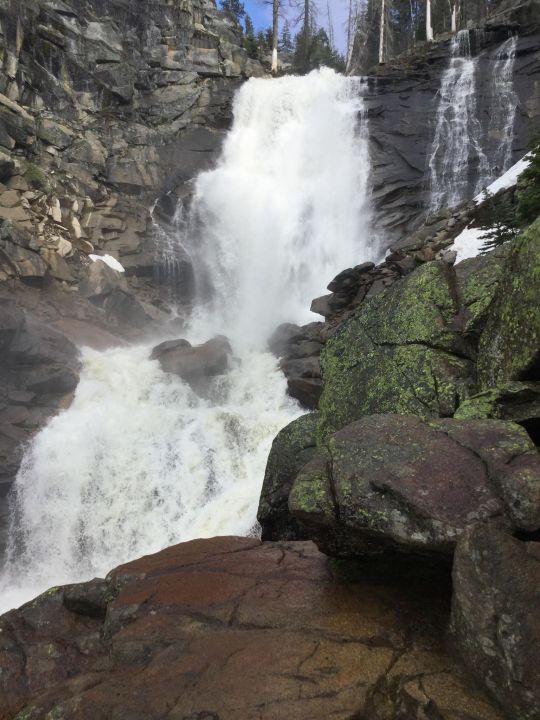
Then we slept in a teepee that night, which was a fun experience, it was a little cold but definitely a fun experience. :)
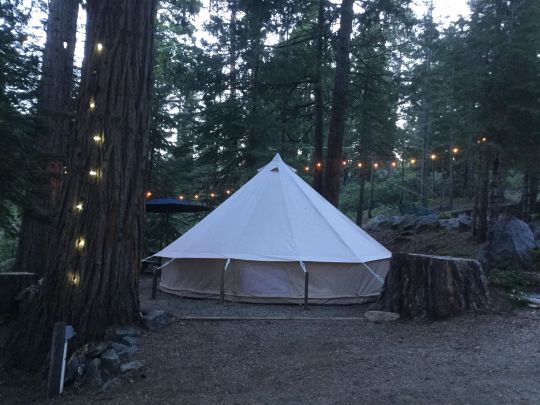
We woke up early on Friday to drive back to San Francisco airport, drop the car off and catch our plane. We left just before 6am and drove to the airport and made it through with just enough time to not have to stress too much. After we checked our bags, we had about an hour to go through TSA security and then wait at the gate. We boarded in one of the last groups and then boarded. We had a young man sitting next to us. The flight was a bit scary because firstly a man a few rows ahead of us got up and went to the toilets as the plane was taxiing to the runway and did not get back to his seat as we were taking off and did not return until well after take off. Then people were getting up and moving around before the seat belt sign was even turned off.
The flight was a little turbulent but not too bad but the flight attendants did not even do a safety check as we were coming in to land because they said it was too bumpy. They served drinks during turbulence and it was not even turbulent when they said it was too unsafe for them to come through the aisle. So that was a downside. I am flying Delta 6 more times during my trip in America, so hopefully next time I like it better.
We made it to Seattle a little bit early and then we picked up our hire car, a Jeep Cheroke, which made us feel like travelling in luxury. We dropped our bags at our accommodation in Shoreline called North Seattle Guesthouse, then we ate Chipotle for the first time. I loved it and I definitely see myself eating Chipotle a lot more on my trip!! It’s a lot like Guzman y Gomez.
Then Mum and I went grocery shopping at a Walmart Neighbourhood Market and then cooked at the accommodation while talking to an elderly couple from Minnesota.
Today we left at about 10am after breakfast to do our Kurt Cobain tour. First we stopped at his house on East Lake Washington Boulevard, the house his body was found it. It was a little emotional being there, and it is hard to believe it happened 25 years ago... I wasn’t even born then. I wrote my name on one of the chairs at Viretta Park, took some pictures and then we went back to the car.
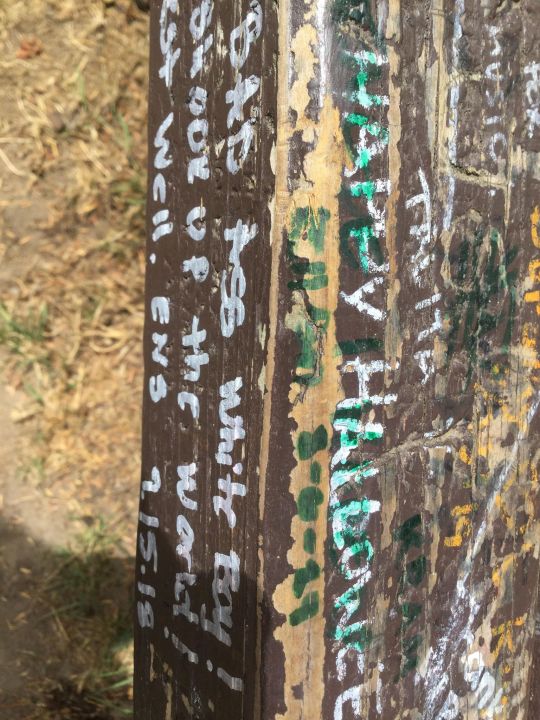

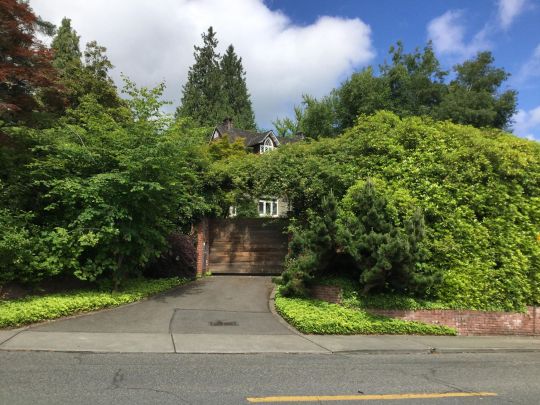
Then we drove out to Montesano, saw the house where Kurt lived with his father from 1978 to 1982. But the area looked dodgy and rundown and I was nervous about the kind of people around so I just took a quick picture and then we left.

Then we drove to Aberdeen, 15 minutes down the road. We pulled off at the Welcome to Aberdeen - Come As You Are sign. I have wanted to see this sign and have my picture with this sign for the longest time so it was amazing to finally see it in real life. Aberdeen, much like Montesano, looked low income and dodgy, so I was a bit nervous. We saw Kurt’s childhood home 1210 East 1st Street, which was a tiny house on the corner and then we found Kurt Cobain Landing, which is a memorial park where he used to hang out under the Young Street bridge. There was a weird guy fishing under the bridge, so I was a bit nervous, but he soon left, but still I didn’t want to hang around for too long. I got some pictures of the park and the bridge and then we left. We went to Walmart to go to the toilet, ate lunch and then stopped at 7/11 before driving back to Seattle.
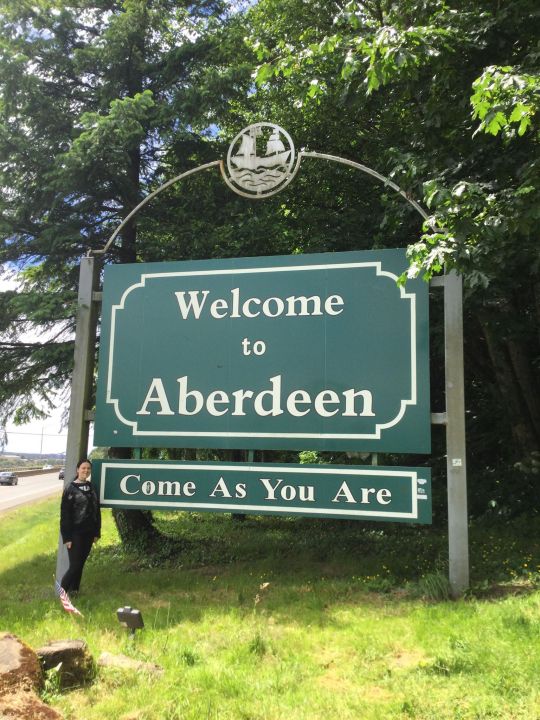
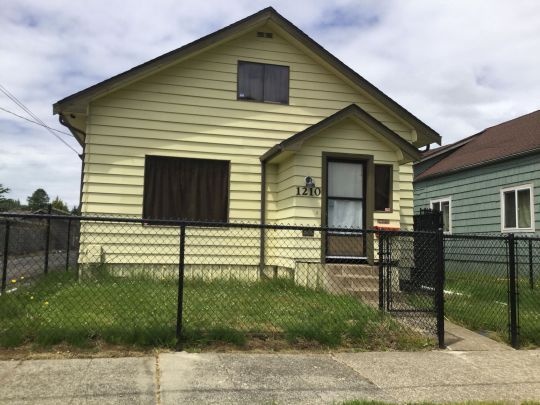
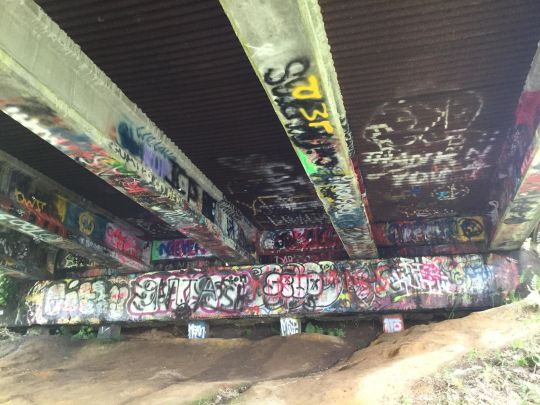

When we got back, we did our laundry and rebooked our Chicago accommodation before going back to our guesthouse and eating.
Although it was a little nervewracking being in these small country towns that we didn’t really know anything about as an outsider in dodgy areas, but it was interesting to learn and see how Kurt grew up and the areas he grew up and hanged out in. Seeing the Wishkah river and the bridge really brought a lot of things together and I felt re-connected to Nirvana.
Tomorrow we are going into Seattle, seeing some grunge locations and I want to go on the Space Needle and then the next day we fly to Chicago.
1 note
·
View note
Text
Hillbilly squatter attempts to build a Miwok house in the sierras
The Miwok is a loose nit group of North central Californian Amerindians, still present today in a number of small ‘Rancherias’, like reservations in miniature. What’s interesting about them is their adaptation to three basic geographical locations, and their semi-nomadic relationships with these regions. The pacific coast offered a rich source in protein and pretty much everything one needed for nourishment, so much so that pre hispanic corn cultivation never really caught on…..why? They didn’t need it.
The central valley of Cali runs north-south through practically the entire state, and was also a rich source in wild food supply. Back in the day, before most all of it was drained off, massive networks of lakes, swamps, inlets and rivers was the predominant feature, providing the Miwok families with reeds to build tightly constructed, waterproof, and architecturally intriguing lodges. Reeds were the main material for canoe making as well. So many wildfowl lived here, and migrated through here, that the old trope of “wings in such number as to darken the skies” was a common occurrence, especially in Fall and Winter for the migrations.
The foothills and higher ranges of the Sierras offered much as well during the summers. The Miwoks in that region concentrated on acorns as a dependable food supply, augmented by fishing, elk and deer hunting, etc. Berries also grew in profusion throughout the ranges.
These early days of prehistory must have been a wild food paradise, which afforded the people much free time for a culturally rich existence, replete with myths, dancing, gaming (including gambling ironically) song, and sport. This was completely destroyed as the Catholic “Missions” of the Spaniards became, basically, slave labor camps where the Miwok and many other groups were forced to work, subsisting on inferior diets. Many took to the hills, some rebelled. As many as 90% perished, though their numbers have rebounded some, in the latter 20th century.
When the “americans”, Scotch Irish, German, English, etc, arrived on the scene with the intense gold fever that infected the mountians, the Miwok were literally hunted like game, as the minors used dogs, poison, cannon, deception and trickery, and rifles to very nearly commit mass genocide. But the Miwok clung to an existence of the hidden refugee, finally reaching a modicum of legal security by the 20th century.
Tho basically an Appalachian raised hillbilly without a drop of Indian blood, Ive always been fascinated by all facets of Native American life, and so, exploring the Sierras in the Yosemite region, homeland to the Miwok and others, I found a little secret glade off the road to try and build a Miwok traditional lodge. Their basic structure included Large planks of bark and outer wood peeled from large pines cedar, and sequoia. Many of the larger lodges were grubbed into the ground several feet, especially the meeting houses, kind of a communal livingroom space for the entire village, where much gambling was had, important political meetings conducted, ceremonies held, and story telling that reached deep into the night, as logs were draped on the fire, which burned slow in a pit at the center.
My lodge was much the same, tho I used mainly deadfall for the structure, leaned tepee style, around a circular pit roughly three feet deep. The extra dirt I then mounded around the bottom of the structure, adding further insulation for those fall and early spring nights still white with frost.
My lodge still stands, I hope, probably curtained with drifts of snow 20 and more feet, which means its mostly buried. I often think about the lodge at night, in the dark of my squat in the city, I picture lazing by the pit fire at the center, gazing at the stars through the smoke hole above. Listening to owls and Coyotes…
I’d like to think the ghosts of those people could still be heard singing, their drums adding as rhythm pounded from the earths center, its heartbeat. But those drums have quietened, for many many generations. Even so, I hear that ceremonies still take place in the rancherias, that programs dedictaed to the revitalization of their native language are strong, and indeed drums can still be heard in the rancheras, with the rich smoky tang of acorns slowly cooking in massice iron pots. The heart of the earth still beats...
What can we learn abt these intriuging people? Let’s imagine we were able to get our population levels down, maybe a pipedream, maybe an impossibility. But just imagine a central vally reflooded with massive lakes supporting very nearly an equal amt of food recources as today. I’m not a back-to -the stoneage kinda guy. We very likely cannot afford to try and save our planet without it at this stage. But: we can most certainly learn from those who were able to sustain themselves comfortable wothout damaging thier environment.
Here’s TO THE GREEN NEW DEAL AND A GREEN NEW CIVLIZATION
1 note
·
View note
Text


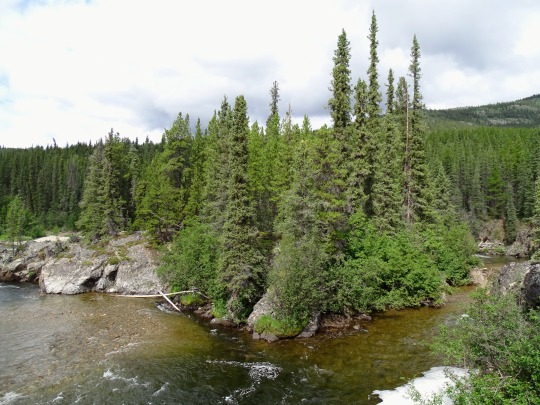

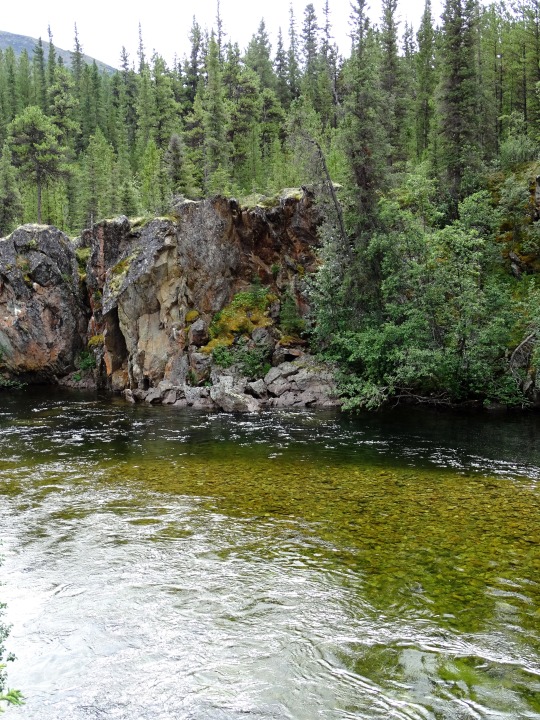


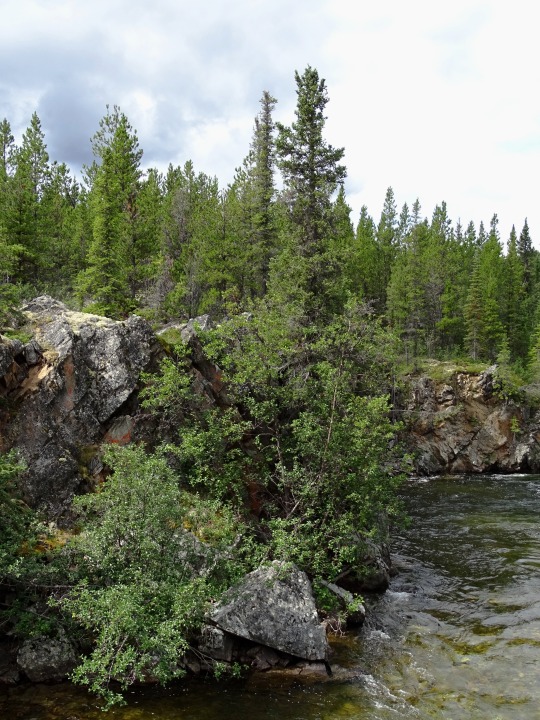


Rancheria Falls Recreation Site, YT (No. 4)
Annual precipitation ranges from 380 cm (150 in) in coastal mountain sites to only 65 cm (26 in) inland. Snow gathered on the branches helps protect them from wind and heat. Firs in general act as a snow fence, leading to the creation of meadows through extra moisture accumulation.
The tree is highly shade tolerant, but very vulnerable to fire, short-lived, and slow-growing. Despite having weaker wood than some of its timberline associates, it can survive by its ability to adapt (growing in a krummholz form) and reproduce via layering in clusters at high elevations. At timberline, a single tree can leave behind a ring of trees (an 'atoll') via layering. The species has benefited from wildfire suppression in more recent years.
Various animals, including mountain goats, take shelter in subalpine fir clusters and krummholz. The bark is browsed by game animals and its leaves are eaten by grouse. Songbirds, Richardson's grouse, Cascade pine squirrels, and other mammals consume the seeds. It is host to pathogenic fungi such as the species Delphinella balsameae.
Source: Wikipedia
#Coast Range subalpine fir#Rancheria Falls Recreation Site#boardwalk#travel#original photography#vacation#tourist attraction#landmark#architecture#forest#woods#Rancheria Falls#Rancheria River#Yukon#the North#flora#pine#fir#lichen#rocks#free admission#nature#Canada#summer 2023#landscape#countryside#Sub-alpine fir#dead wood#birch#waterfall
4 notes
·
View notes
Photo

PILILLA AND ITS HERITAGE STRUCTURES MADE OF STONE The first time JB Tahum and I went to Pililla, Rizal, which was back in 2016, we only wanted to see the windmills. There weren't many tourists then, so we really enjoyed the cool wind and the great view of Laguna de Ba-i. What JB did not tell me that time was that Pililla has a Spanish colonial period church. Although we often planned to visit the church, we only got to visit it in 2020. The church was closed then, so we returned a year later to see how good it looks inside. When we brought Albert Vincent Barretto for a Rizal Province Road Trip early this year, we also brought him to Pililla Church. Reading Padre Félix de Huerta, OFM's "Estado Geográfico...," I learned that Pililla was a barrio formed out of five rancherias owned by Don Francisco Casag (on Mount Tanay), Don Pedro Canayon (in Tigbi), Don Alonso Real (in Quisao), Don Pedro Bacay (on Mount Yacat) and Don Vicente Bouan (along the Dolo River). The barrio, which was under Morong, was originally called Pilang-morong. In 1583, it separated itself from Morong and was called Pililla. A 1977 National Historical Institute marker gives a short summary of the church's history. The first Franciscan missionaries arrived in Pililla in 1572. In 1583, a church made of cogon and bamboo was constructed. It was placed under the patronage of Santa María Magdalena. This church was replaced by one made of wood in 1599. The marker does not mention when this wooden church was replaced by a stone church. (Padre Huerta gave no such information in his chronicles, but he did write that the Spanish colonial government granted Pililla a license to build a church made of stone in 1599.) It does say, however, that the stone church caught fire in 1632 and was rebuilt between 1670 and 1673. (Padre Huerta wrote in his chronicles that the church burned down again in 1668.) The present church dates back to 1673, making it one of the oldest churches in the Philippines. The altars and the convent were repaired in 1848. The marker also mentions the renovations done between 1962 and 1976. #risinginrizal #thetimetrekker https://www.instagram.com/p/Cb00GhEhdTm/?utm_medium=tumblr
0 notes
Photo

I📍 Riohacha Riohacha is a city in northern Colombia, where the Rancheria River meets the Caribbean Sea. It is known for its native Wayúu people and for the colorful birds of the Flamingo Sanctuary southwest of the city. The 19th-century Cathedral of Nuestra Señora de los Remedios is located in the Plaza Central Padilla. The palm-shaded beach has a long pier. To the northeast are the windy beaches of Mayapo and the bright white salt flats of Manaure. That said, Is Riohacha worth Visiting ? How to get there? What are the best places to stay and best things to do on site? We answer all your questions: Check out our FREE Travel Guide full of valuable tips and beautiful photos: 🌎 Riohacha: Complete Travel Guide 2021 🌎 👉 https://wego-planet.com/riohacha-travel-guide/ 👉 Link in Bio ================================ 📷 Photo Credit @davidesviajero 🙏 Thank you for your fantastic photo ! 👉 Visit and follow his amazing gallery ! ================================ 🏆 Do you want to get featured ? 👉 FOLLOW @Wego.Colombia 👉 TAG @Wego.Colombia or USE #WegoColombia ================================ ⚙️ Selected by @WegoPlanet ================================ #Riohacha #LaGuajira #Colombia #travelphotographer #travelphotographers #theglobewanderer #passionpassport #photooftheday #awesome_photographers #travelmore #goexplore #wonderfulplaces #openmyworld #lovetotravel #adventurethatislife #roamtheplanet #travelgirl #traveldudes #solotravel #travelcouple #wanderlust #adventureseeker #doyoutravel #responsibletravel #adventuretime #phototours #phototour #photographyworkshop 💬 Now your turn: Do you have any questions about Riohacha ? Or if you already visited Riohacha, did you enjoy it ? Either way, let me know in the comments below ! https://instagr.am/p/CXa6wCAOSPe/
0 notes